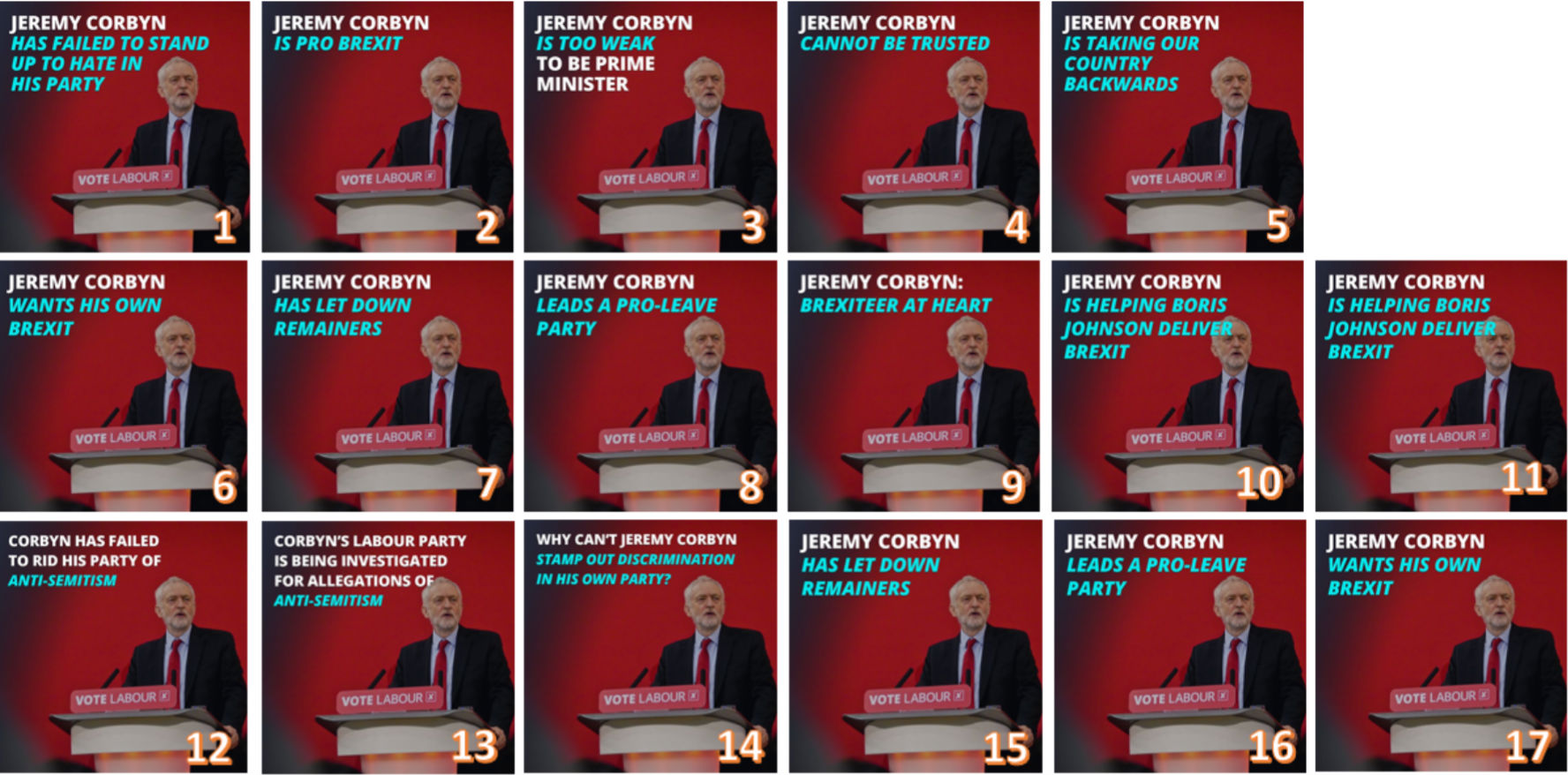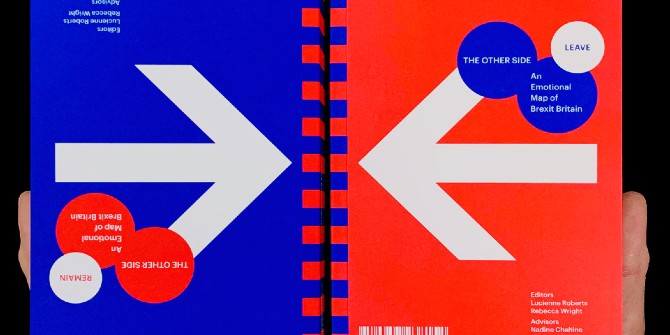 With the general election a month away, how are the parties targeting voters on Facebook with messages about Brexit? Tristan Hotham (University of Bath) explains how A/B testing is being used to identify the most effective campaign themes.
With the general election a month away, how are the parties targeting voters on Facebook with messages about Brexit? Tristan Hotham (University of Bath) explains how A/B testing is being used to identify the most effective campaign themes.
Political parties using Facebook ads have a powerful capacity to hone their messages. Unlike in the past – where expensive and hard-to-organise focus groups were the only available space for parties to test their messages – today all the political parties engage in what marketers call A/B testing (aka multivariate testing).
Political parties have never had it so good, as it’s ‘us’ (the users), who help make this happen. Today party campaigning is Janus-faced, and a fantastic example of this is via how the parties are using A/B testing to campaign on Brexit. The focus of messages so far has been personalised, with Brexit often enmeshed in negative attack advertisements featuring opposition leaders. The content is generally targeted at men.
So what is A/B testing?
A/B testing is a method of comparing two or more versions of an advert against each other to determine which one performs better. Depending on what content is used, people will interact differently. Then statistical analysis can be used to examine which variation performs better for a given goal. Give it is such a ubiquitous tool, it is interesting how little academic study has been undertaken into its political use, although some work has outlined the use of testing by activism groups (Karpf, 2018) and in the Trump campaign (Pybus, 2019).
A central approach is via negative campaigning. This uses negative content to attack the opposition, and can lead to a more negative campaign environment, reducing voter turnout and increasing radicalised politics. In the past, negative advertising was much harder to use. Testing messages via focus group was expensive and the chosen messages were then generally sent at the broadcast level. Broadcast approaches meant you had as much chance to put someone off voting for you as pushing someone to stop voting for your opponent, as being associated with negative campaigning could in turn isolate undecided voters and reduce trust. Today, Facebook has allowed parties a safe space to engage in negative messaging, especially content surrounding Brexit and the issues it represents.
So what have the parties been testing?
Liberal Democrats
As seen in the first image, the Liberal Democrats are putting a lot of effort into finding the best line to attack Jeremy Corbyn, especially in the context of Brexit. These adverts are from late October and used the following text:
We must stop Boris Johnson, but Jeremy Corbyn is not fit to be Prime Minister.
Join the Liberal Democrats and demand a brighter future.
The Liberal Democrats do not just stand as a Remain-supporting party, but also use Brexit as a tool to hammer opposition leaders. With the strong rhetoric used, it is interesting to see the party test out so many Brexit-related attack lines on Corbyn. The Liberal Democrats are engaging in both positive and negative campaigns about Brexit on Facebook. In the case of five of these anti-Corbyn adverts, the party is focusing heavily on younger/middle aged men.
Graph 1: Male and female audience demographics for Liberal Democrat Corbyn attack adverts
Conservatives
The Conservatives are also engaging in negative A/B testing centred on Brexit. The second image shows a subset of advert images sent by the Conservatives from 8-13 August 2019. As well as trialling various colours and the use of Corbyn, dozens of adverts show different versions of the Labour leader. Floating arms are seen ‘stuffing the ballot box’ with Remain tickets. All the posts featured this text, which speaks directly to a people versus Parliament narrative:
Politicians like Jeremy Corbyn are only respecting remain votes — and ignoring 17.4 million leave voters. ❌
Add your name now — don’t let him get away with it. ⬇️
Again, as seen with the Liberal Democrats, these adverts were heavily aimed at men, as well as over 65-year-old women. The new people vs. parliament Brexit attack line is clearly aimed at over 45-year-old men and over 65-year-old women.
Graph 2: Male and female audience demographics for Conservative Corbyn attack adverts
Labour
Labour also consistently uses A/B testing, although most of their examples only test two or three variations on an advert. They prefer to test a few types of adverts multiple times, rather than adjusting message and content. The best example of their negative testing of Brexit is seen in three images linking the NHS to Donald Trump and Brexit (below). These adverts ran from 25-31 October 2019. Unlike the Conservatives and Liberal Democrats, these adverts were generally aimed at younger women and men.
The best example so far of Labour covering Brexit as well as engaging in A/B testing is the final image, which details several examples of Labour adverts that pushed for users to sign a petition, and clearly supports their ‘confirmatory referendum’ policy. Almost all the posts seen used this text:
Brexit should not be a choice between the Tories’ bad deal and a disastrous No Deal.
That’s why Labour would put any Brexit deal back to the people to let them decide.
Agree with us? Add your name to our petition ✍
The adverts were sent to all sorts of different demographics, but generally focussed on older women, and balanced younger men and women.
Conclusion
All the parties are engaging in A/B testing of Brexit content, and it is split across uses for improving messages, images and data collection. The parties are admixing Brexit and attack lines on leaders, with these ads testing lines we are likely to see later in the campaign. The question of why negative personalised adverts appear to be focused centrally on men is interesting, and has not been a focus of researchers. This approach, which has been taken by the Liberal Democrats and Conservatives, may be due to the fact that men voted more heavily for Leave. However, the pushing of negative content towards men is problematic, because the parties appear to be driving a wedge between men and women on an issue that is of equal consequence to all of us.
A/B testing is also being used in a negative way to hyper-charge content designed to demobilise voters. This is a threat to our democracy: negative messages on Brexit that can drive voters towards polarising opinions are becoming more refined. We, as voters, are being compartmentalised, fractured and sold different ideas. The impacts on the foundations of community and the common ground of politics will be stark.
References
Karpf, David. “Analytic Activism and Its Limitations.” Social Media+ Society 4.1 (2018): 2056305117750718.
Pybus, Jennifer. “Trump, the First Facebook President: Why Politicians Need Our Data Too.” Trump’s Media War. Palgrave Macmillan, Cham, 2019. 227-240.
This post represents the views of the author and not those of the Brexit blog, nor LSE.












